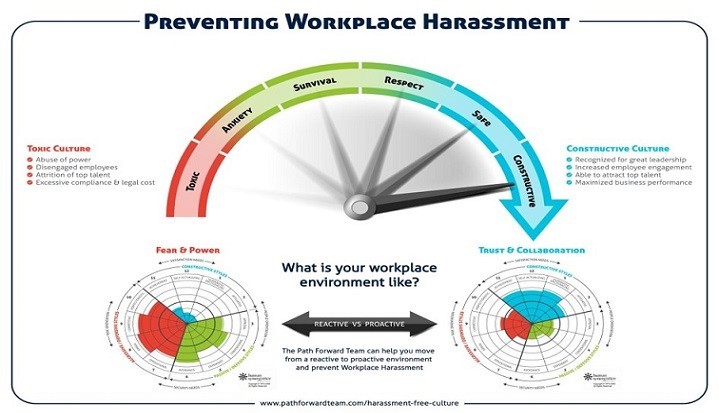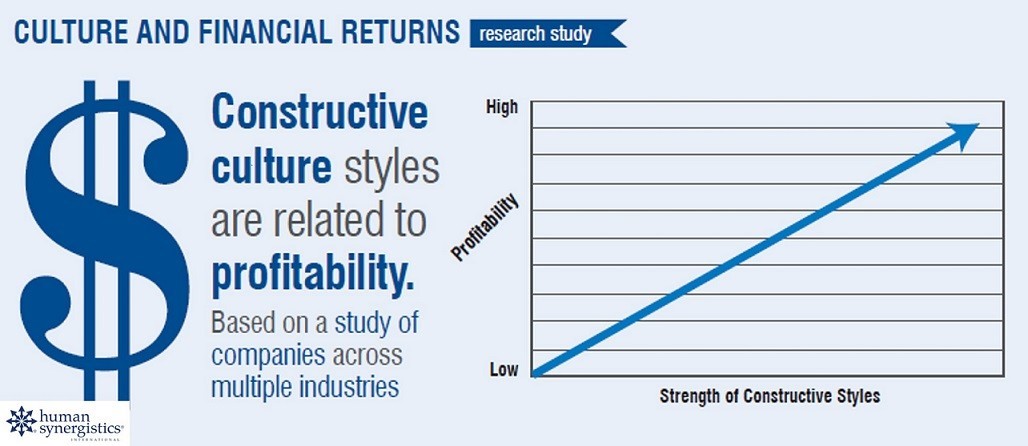How to change organizational culture to create a Harassment Free Workplace.
Last week, I introduced you to James Carey, a former IBM engineer, who contributed his thoughts on harassment in the workplace and the ineffectiveness of training on the topic to really affect the desired change.
In this installment, Jim will share some of the lessons he has learned from successful cultural change initiatives and provide practical tips to consider when starting an organizational change initiative of your own.
John Kotter, a noted author on the subject of change and the process for effective change, also weighs in.
This is the second in a two-part series. Click on this link to read part one.
In the first part, we explored the reasons why it’s time for business leaders and HR professionals to take a new approach to prevent workplace harassment. Research shows that traditional anti-harassment training programs have not been effective at preventing workplace harassment and do not affect lasting behavior changes on the part of actual and would-be harassers.
A more effective approach is to change the culture, which includes the behavioral norms and expectations for all employees, in order to create a more constructive organizational culture. To begin with, a culture that tolerates bad behavior of any kind is more likely to experience problems with harassment. On the positive side, research shows that an organization with a predominately constructive organizational culture has been proven to improve sustained business performance and profitability.
A Constructive Culture Leads to Sustained Business Performance
© 2017 Human Synergistics International.
The construct of organizational culture is a prominent topic these days. There is much written about culture in the business, human resources, and talent management literature. However, what is often ignored, overlooked or glossed over is how to measure culture. Using an accepted and valid culture assessment is important to objectively quantify the current culture and have a baseline measurement to identify both the strengths and the challenges of your culture. A good culture assessment serves as your starting point as well as a comparative yardstick against “best of breed” organizations. Lastly, and most importantly, the “Current State” culture assessment has to be held up against the “Preferred” culture that employees and leaders have identified as the ideal culture that would allow them to perform at their best. It is the gaps between the Current State and Preferred culture that make up the foundation for a culture change initiative.
The culture assessment tool used by the PathFinders Group team is the Organizational Culture Inventory (OCI) from Human Synergistics, International (HS). The suite of assessment tools from HS provides a visual model, called the Circumplex, for developing Constructive styles in individuals, managers, leaders, teams, and organizations. The Circumplex breaks down the behavioral norms proven to drive performance effectiveness according to 12 behaviors or styles. These styles are further grouped according to three general clusters:
● Constructive styles encourage the attainment of organizational goals through people development; promote teamwork and synergy; and enhance individual, group, and organizational adaptability and effectiveness.
● Aggressive/Defensive styles lead people to focus on their own needs at the expense of those of their group and organization and lead to stress, turnover, and inconsistent performance.
● Passive/Defensive styles lead people to subordinate themselves to the organization, stifle creativity and initiative, and allow the organization to stagnate.
The styles are measured by their strength or intensity by how far out they extend from the center of the Circumplex (see below). For the Current State measurements, the extensions represent the degree to which organization members are required to demonstrate those behaviors in order to succeed or be in alignment with the cultural expectations for that organization. For the Preferred Culture, the extensions represent the view of members in terms of the “ideal” culture that would empower them to perform to the best of their ability. The differences between the Current State and Preferred Cultures represent the opportunity for improvement for the organization, both from an organizational “fit” at the employee level and for the overall performance of the organization.
Organizational Culture Inventory - "The Circumplex"
© 2017 Human Synergistics International.
Using these examples; in the Current State Culture (the circumplex on the left), the predominance of the Aggressive/Defensive (red) and Passive/Defensive (green) behaviors indicate the dominant leadership style relies heavily on the Aggressive behaviors (i.e.; a high need for control and power) while employees react by becoming more Passive and complacent (i.e.; a high need for security). When leaders have an expectation to “get things done” with a sense of urgency, it often leads to Aggressive behaviors by people in positions of authority.
These Aggressive behaviors, in turn, create an environment where control and power are the dominant force of motivation. Employees then typically respond by being more Passive and complacent, which creates the conditions where harassment is most likely to occur, and least likely to be reported or acted upon when reported.
This type of Aggressive and Passive dynamic can easily create an environment where people in power feel they have the right and privilege to dominate those not in power. When that happens, the result is a culture where victims of harassment are afraid to speak out, and when they do are often punished or experience other types of retribution. This helps to explain part of the reason why studies consistently show that 70-75% of workplace harassment goes unreported. That is why we call this type of profile a “Toxic Culture,” one that is defined by excessive use of fear and power. With this type of culture, sexual harassment training will have little or no impact and most likely will be considered a joke by the participants. The reason is the cultural dissonance that exists when corporate policy and training programs say one thing, but the accepted behaviors are something very different.
Looking at the Preferred Culture (the Circumplex on the right), the Constructive (blue) behaviors are all above the 75th percentile, with the Achievement and Humanistic-Encouraging behaviors close to the 90th percentile. The Aggressive/Defensive (red) behaviors are all reduced to around the middle (the 50th percentile) and the Passive/Defensive (green) behaviors are even lower (around the 25th percentile). The strong Constructive behaviors in the Preferred Culture are all achievement-oriented behaviors and indicate a high-performing organization. We call this type of profile a “Constructive Culture,” one that is defined by high levels of trust and collaboration and sustained business performance.
Transforming an organization’s culture can be a daunting challenge and is often easier said than done. Through experience leading, facilitating, and coaching many transformation initiatives, the Path Forward to Business Transformation team has developed this graphic to visualize the critical components for a transformation initiative to be successful.
Path Forward Change Model
© Path Forward to Business Transformation
Some of the important change management principles to follow to ensure the success of a change initiative;
1. Articulate the “compelling reason” for the change.
2. Demonstrate strong and visible commitment from the top of the organization.
3. Identify the gaps, or problems, to be solved to move from current state to future state.
4. Engage Employees at all levels of the organization in the transformation.
5. Sustain the changes with regular reviews, course corrections, and updated goals.
The case for transforming from a “Toxic Culture” to a “Constructive Culture” is very compelling on many levels. Our focus here is how a shift in culture can help an organization prevent workplace harassment. Other benefits of having a more Constructive Culture include being a more innovative and adaptive organization, improved employee engagement, improved ability to attract and retain top talent, outstanding and respected leaders, and maximized business performance. Lastly, once you start on a culture transformation journey, be sure to apply change management best practices to improve your odds of sustainable success.





